SF3B1 mutation-mediated sensitization to H3B-8800 splicing inhibitor in chronic lymphocytic leukemia
- PMID: 37562845
- PMCID: PMC10415613
- DOI: 10.26508/lsa.202301955
SF3B1 mutation-mediated sensitization to H3B-8800 splicing inhibitor in chronic lymphocytic leukemia
Abstract
Splicing factor 3B subunit 1 (SF3B1) is involved in pre-mRNA branch site recognition and is the target of antitumor-splicing inhibitors. Mutations in SF3B1 are observed in 15% of patients with chronic lymphocytic leukemia (CLL) and are associated with poor prognosis, but their pathogenic mechanisms remain poorly understood. Using deep RNA-sequencing data from 298 CLL tumor samples and isogenic SF3B1 WT and K700E-mutated CLL cell lines, we characterize targets and pre-mRNA sequence features associated with the selection of cryptic 3' splice sites upon SF3B1 mutation, including an event in the MAP3K7 gene relevant for activation of NF-κB signaling. Using the H3B-8800 splicing modulator, we show, for the first time in CLL, cytotoxic effects in vitro in primary CLL samples and in SF3B1-mutated isogenic CLL cell lines, accompanied by major splicing changes and delayed leukemic infiltration in a CLL xenotransplant mouse model. H3B-8800 displayed preferential lethality towards SF3B1-mutated cells and synergism with the BCL2 inhibitor venetoclax, supporting the potential use of SF3B1 inhibitors as a novel therapeutic strategy in CLL.
© 2023 López-Oreja et al.
Conflict of interest statement
D Colomer reports grants and personal fees from H3 Biomedicine, Novartis, Incyte, AstraZeneca, and AbbVie.
Figures
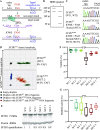
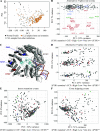
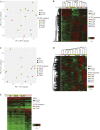
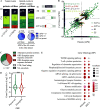

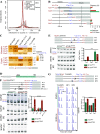
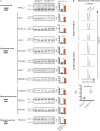

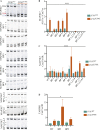


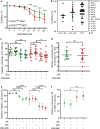
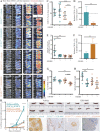
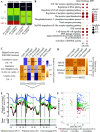
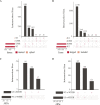
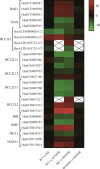

Similar articles
-
Long-read transcriptome sequencing of CLL and MDS patients uncovers molecular effects of SF3B1 mutations.Genome Res. 2024 Nov 20;34(11):1832-1848. doi: 10.1101/gr.279327.124. Genome Res. 2024. PMID: 39271291 Free PMC article.
-
A Murine Model of Chronic Lymphocytic Leukemia Based on B Cell-Restricted Expression of Sf3b1 Mutation and Atm Deletion.Cancer Cell. 2019 Feb 11;35(2):283-296.e5. doi: 10.1016/j.ccell.2018.12.013. Epub 2019 Jan 31. Cancer Cell. 2019. PMID: 30712845 Free PMC article.
-
Altered DNA Methylation Profiles in SF3B1 Mutated CLL Patients.Int J Mol Sci. 2021 Aug 28;22(17):9337. doi: 10.3390/ijms22179337. Int J Mol Sci. 2021. PMID: 34502260 Free PMC article.
-
SF3B1 mutations in chronic lymphocytic leukemia.Blood. 2013 Jun 6;121(23):4627-34. doi: 10.1182/blood-2013-02-427641. Epub 2013 Apr 8. Blood. 2013. PMID: 23568491 Free PMC article. Review.
-
Somatic SF3B1 mutations in myelodysplastic syndrome with ring sideroblasts and chronic lymphocytic leukaemia.J Clin Pathol. 2019 Nov;72(11):778-782. doi: 10.1136/jclinpath-2019-205895. Epub 2019 Aug 31. J Clin Pathol. 2019. PMID: 31473630 Review.
Cited by
-
Chronic lymphocytic leukemia patient-derived xenografts recapitulate clonal evolution to Richter transformation.Leukemia. 2024 Mar;38(3):557-569. doi: 10.1038/s41375-023-02095-5. Epub 2023 Nov 28. Leukemia. 2024. PMID: 38017105 Free PMC article.
-
The non-canonical BAF chromatin remodeling complex is a novel target of spliceosome dysregulation in SF3B1-mutated chronic lymphocytic leukemia.Leukemia. 2024 Nov;38(11):2429-2442. doi: 10.1038/s41375-024-02379-4. Epub 2024 Sep 11. Leukemia. 2024. PMID: 39261602 Free PMC article.
-
The Impact of Spliceosome Inhibition in SF3B1-Mutated Uveal Melanoma.Invest Ophthalmol Vis Sci. 2024 Oct 1;65(12):11. doi: 10.1167/iovs.65.12.11. Invest Ophthalmol Vis Sci. 2024. PMID: 39374010 Free PMC article.
-
Cancer-associated SF3B1 mutation K700E causes widespread changes in U2/branchpoint recognition without altering splicing.Proc Natl Acad Sci U S A. 2025 Apr;122(13):e2423776122. doi: 10.1073/pnas.2423776122. Epub 2025 Mar 26. Proc Natl Acad Sci U S A. 2025. PMID: 40138349 Free PMC article.
-
Targeting RNA splicing modulation: new perspectives for anticancer strategy?J Exp Clin Cancer Res. 2025 Jan 30;44(1):32. doi: 10.1186/s13046-025-03279-w. J Exp Clin Cancer Res. 2025. PMID: 39885614 Free PMC article. Review.
References
-
- Alsafadi S, Houy A, Battistella A, Popova T, Wassef M, Henry E, Tirode F, Constantinou A, Piperno-Neumann S, Roman-Roman S, et al. (2016) Cancer-associated SF3B1 mutations affect alternative splicing by promoting alternative branchpoint usage. Nat Commun 7: 10615. 10.1038/ncomms10615 - DOI - PMC - PubMed
Publication types
MeSH terms
Substances
LinkOut - more resources
Full Text Sources
Miscellaneous
